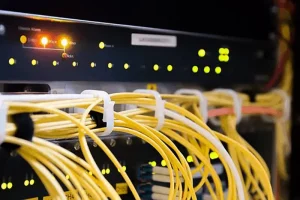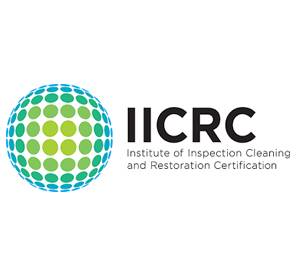Introduction to Low Voltage Communication
Are you ready to dive into the world of Low-Voltage Communication? In today’s fast-paced digital age, staying connected is more important than ever. Low-voltage communication systems offer a reliable and efficient way to keep information flowing smoothly. Let’s explore the benefits, types, implementation strategies, and industries that benefit from it and get a glimpse into the future of this cutting-edge technology. Stay tuned for an enlightening journey ahead!
Benefits of Low Voltage Communication
- Cost-effective: Low-voltage communication systems use less power than traditional high-voltage systems, resulting in significant cost savings in the long run.
- Easy installation: These systems are relatively easy to install and can be set up without disrupting the existing electrical infrastructure.
- Reliable: Low voltage communication systems use dedicated wiring and transformers, making them less susceptible to interference from other electrical devices.
- Flexible: These systems can be easily expanded or modified to accommodate changing needs without major rewiring or expensive equipment replacements.
- Safe: As the name suggests, low voltage communication operates at a lower voltage level, reducing the risk of electric shock and fire hazards.
Types of Low Voltage Communication Systems
- Local Area Networks (LAN): LANs connect computers and devices within a limited area, such as an office building or campus. They allow for fast and efficient data transfer between connected devices.
- Wide Area Networks (WAN): WANs connect multiple LANs over a larger geographic area, allowing for communication between remote locations.
- Wireless networks: These networks use radio waves to transmit data between devices without physical cables or wires.
The Benefits of Low Voltage Communication Systems
The systems offer a range of benefits that make them a smart choice for various applications. One key advantage is their energy efficiency, as these systems consume less power compared to traditional high-voltage setups. This not only reduces operating costs but also contributes to a more sustainable and environmentally friendly approach.
Another benefit is the enhanced safety provided by low-voltage systems. With lower voltages running through the equipment and wiring, the risk of electrical hazards and accidents is significantly reduced. This makes them ideal for residential, commercial, and industrial use where safety is a top priority.
Additionally, low-voltage communication systems are known for their reliability and stability. They are less prone to fluctuations or disruptions, ensuring consistent performance even in challenging conditions. This reliability translates into improved productivity and seamless operation across different applications.
The benefits of low-voltage communication systems extend beyond cost savings and safety measures; they provide a dependable solution that effectively meets the needs of modern technology-driven environments.
 Types of Systems
Types of Systems
The systems come in various types, each serving specific purposes based on the environment and requirements. One common type is Ethernet cabling, which allows for high-speed data transmission within buildings or business over short distances. Another type is fiber optic cables, known for their ability to transmit data over long distances with minimal signal loss.
Wireless communication systems like Wi-Fi and Bluetooth are famous for connecting devices without physical cables. Power-line communication uses existing electrical wiring to transmit data signals, making it a convenient option in locations where running new wires is not feasible.
In industrial settings, Profibus and Modbus commonly use low-voltage communication protocols to connect automation equipment and sensors. Each type of system has strengths and limitations, so choosing the right one depends on factors like distance, speed, reliability, and cost.
How to Implement a Voltage Communication System
The first step in implementing a system is to assess your specific needs and requirements. Consider factors such as the size of the area to be covered, the number of devices to be connected, and any potential obstacles that may affect signal transmission.
Next, based on your assessment, choose the appropriate type of low-voltage communication system. Options include wired systems like Ethernet or fiber optic cables or wireless systems such as Wi-Fi or Bluetooth. Selecting the right technology will ensure optimal performance and reliability.
Once you have selected the system type, carefully plan out the installation process. This involves positioning devices strategically for maximum coverage and efficiency. Proper cable management is crucial for wired systems to avoid interference and maintain signal integrity.
After installation, thoroughly test the system to identify any potential issues or gaps in coverage. Make adjustments as needed to optimize performance and ensure seamless communication between devices. Regular maintenance and updates are also essential for long-term functionality.
Industries that Benefit from Low Voltage
Various industries benefit greatly from it. In the healthcare sector, these systems help improve patient care by enabling seamless communication between medical staff and monitoring equipment. Additionally, in manufacturing plants, low-voltage communication ensures efficient operations by facilitating real-time data exchange between different departments.
Retail businesses also find value in these systems, as they enhance security measures through surveillance cameras and access control solutions. Moreover, educational institutions utilize low-voltage communication to support interactive learning environments with audio-visual technology integration.
The transportation industry relies on these systems for smooth traffic management and passenger information dissemination at airports and train stations. Furthermore, in the hospitality sector, low-voltage communication enhances guest experiences through smart room controls and digital signage displays.
Various industries leverage the benefits of low-voltage communication to streamline processes, enhance safety measures, and improve overall efficiency in their respective fields.
The Future of This Technology
As technology advances rapidly, the future of low-voltage communication systems looks promising. The demand for efficient and reliable communication networks is increasing with ongoing developments in IoT and smart devices.
In the coming years, we expect to see even more integration between low-voltage communication systems and other intelligent technologies. This seamless connectivity will revolutionize the sharing and utilizing information across various industries.
Advancements in AI and machine learning are also likely to significantly enhance the capabilities of low-voltage communication systems. These technologies will enable quicker data processing, improved security measures, and enhanced overall performance.
Moreover, as sustainability becomes a key focus globally, there will be an emphasis on developing energy-efficient solutions for low-voltage communication systems. This shift towards eco-friendly practices will benefit businesses and contribute to reducing carbon footprints.
The future of low-voltage communication technology is bright, with endless possibilities for innovation and growth. Stay tuned for what’s next in this exciting technological landscape!
Conclusion
As technology continues to advance, low-voltage communication systems are becoming increasingly essential in various industries. From providing efficient data transmission to enhancing security measures, the benefits of low-voltage communication are undeniable. With different types of systems available and easy implementation methods, businesses can seamlessly integrate these solutions into their operations.
Industries such as healthcare, education, retail, and more significantly benefit from adopting low-voltage communication technologies. Organizations can improve their efficiency, productivity, and overall performance by staying ahead of the curve and investing in these systems.
Looking toward the future, we can expect even more innovations in this technology. As demand grows for faster and more reliable data transfer capabilities, advancements in this field will continue to drive progress across various sectors.
Embracing it is not just a trend but a necessity for businesses looking to stay competitive in today’s digital age. By understanding the benefits and implementing these systems effectively, companies can set themselves up for success now and in the future.


 Types of Systems
Types of Systems




